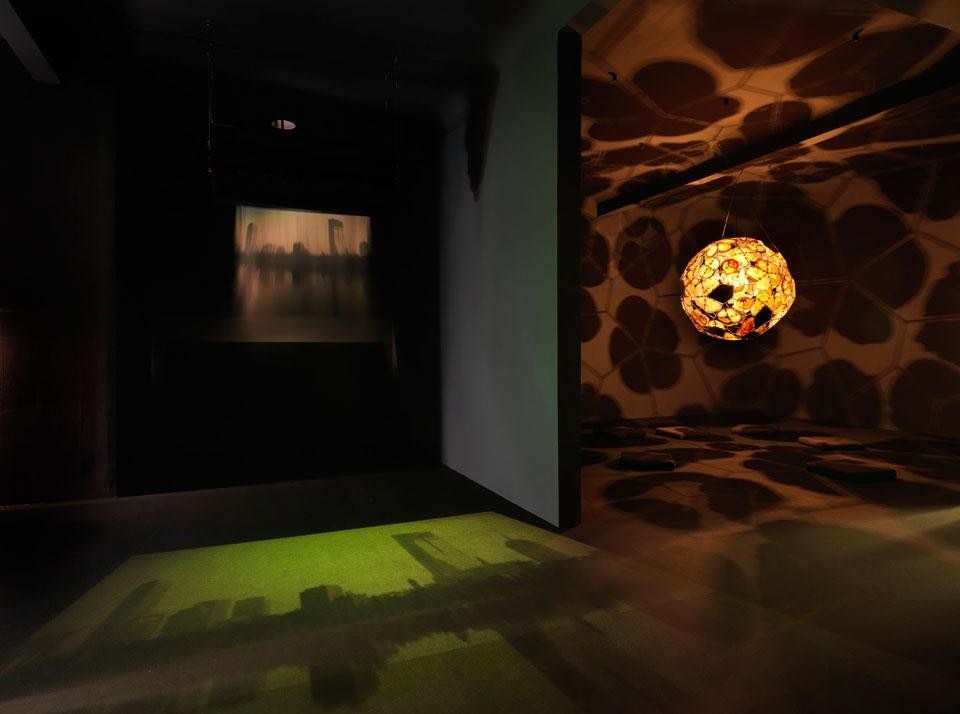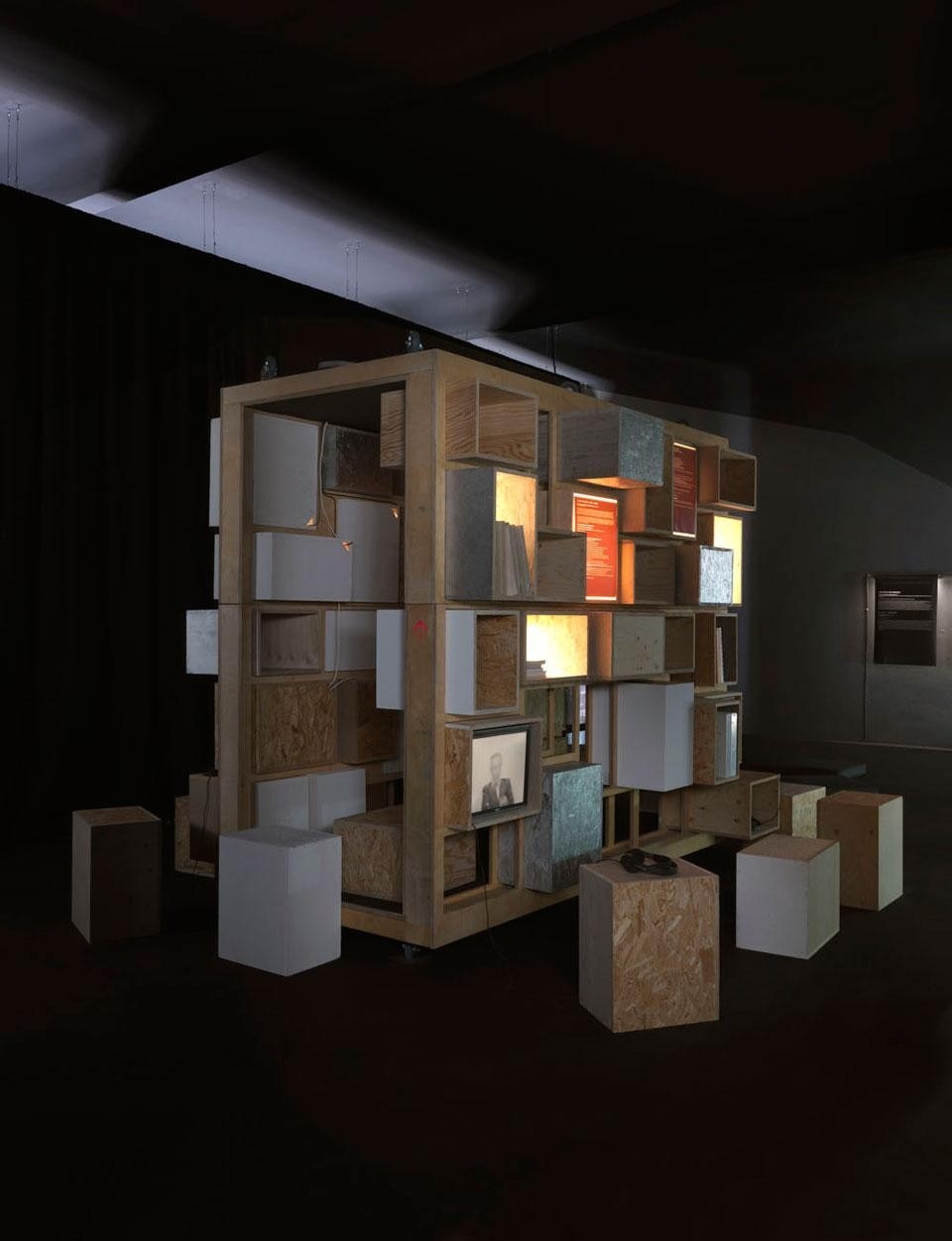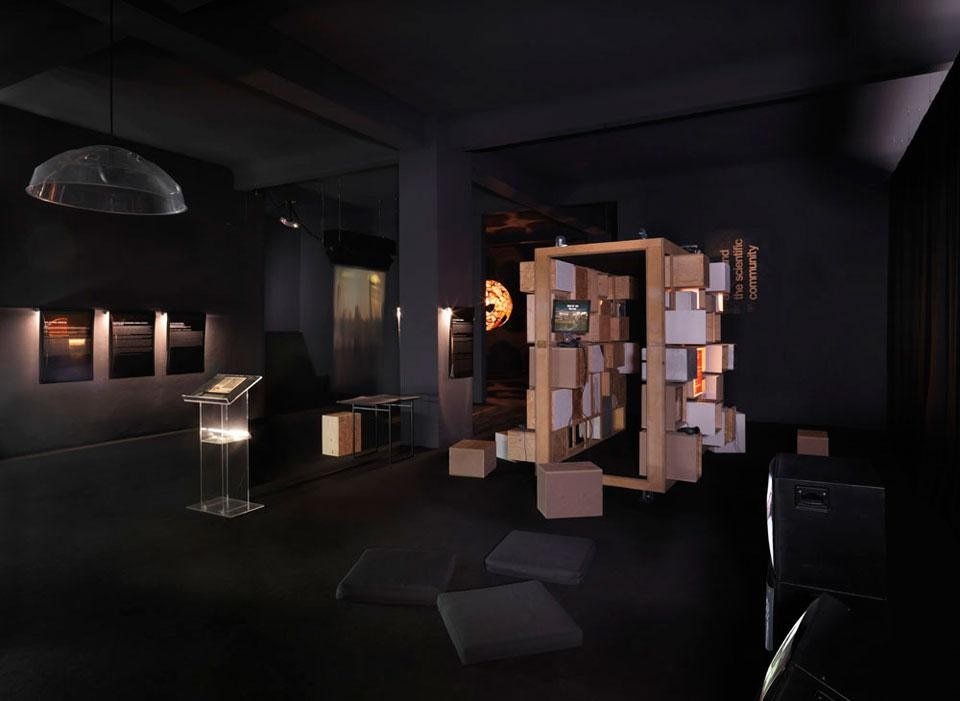Currently on display at the Neuer Berliner Kunstverein (NBK), The Future Archive, an exhibition curated by Ute Meta Bauer, assembles two decades of research projects (1970s and 1980s) held during the tenures of Kepes and Otto Piene's — who succeeded Kepes in 1974 — at CAVS, whilst exploring manifold ways to bridge the time hiatus between the historical material and the contemporary projects.
The exhibition press release tells us that "the groundbreaking artistic approaches of a generation of CAVS directors and fellows were ahead of their time", yet The Future Archive has the paradoxical property of making current projects look retro instead of highlighting the actuality of the archival proposals. Upon entering the exhibition space the visitor finds him/herself immersed in complete darkness — the exhibition design was inspired by Aldo Tambellini's 1965 performance Black — from which spectral shapes start to emerge. Amongst these one can see a sturdy shelve system, The Turtle Two (2009), Luis Berríos-Negrón modular mobile which houses the bulk of the CAVS archive; Centerbeam (1977-1978) a collaborative multimedia installation shown at Documenta 6 (1977) in Kassel, along with a film documenting the project's reception by Richard Leacock and John Rubin; Aldo Tambellini's Black Film, seven experimental films in which the artist manipulated the negative with ink, stencils and chemicals to create a distressed effect; or Maryanne Amacher's Boston Harbour (City Links #4 and #14) (1973-79), a compilation of sound works which model the relationship of resonances to their environment.

As Wittgenstein once noted, if someone is merely ahead of his time, it will eventually catch up to him. Claims of radicality notwithstanding, what The Future Archive fails to do is to critically engage with its own history in order to scrutinize the theoretical postulates that still frame the CAVS research programs.
One of the seminal CAVS projects, the Charles River Project (1971-1974) sought to revitalize the Charles River in Boston through an architectural restructuring of the banks into a leisurely area. The tawdry post-industrial cityscape was reconfigured into a sleek promenade, which would anticipate a torrent of future river-side promenades in newly gentrified cities. While in the 1930s and 1970s it was still possible to sustain — as Kepes did — that an architectonic re-articulation of the urban landscape would effect a democratic re-structuring of the social realm, it has since became clear for anyone who has ever visited Qatar or Dubai that the revolutionary power of novel forms and structures can accommodate all types of servitude.

Kepes, himself, was heavily influenced by Gestalt psychology, a theory of vision and cognition opposed to behaviorism, which holds that our senses have a form-generating capacity. In Language of Vision, published in 1944, and widely used as a college textbook, Kepes maintains that visual communication is "universal and international." Said universalism was sustained and sealed by post-colonial power, however, and it took many generations of non-Western subjects falling afoul of IQ and personality tests for this to began to be recognized.
Claims of radicality notwithstanding, what The Future Archive fails to do is to critically engage with its own history in order to scrutinize the theoretical postulates that still frame the CAVS research programs

System theory extends the cybernetical treatment of thermodynamic systems to the analyses of biological, computational or social systems. That is, the postulate that a system's actions modify the characteristics of the environment which in turn causes the system to adapt, maintaining the recursive dynamic of a feedback loop. What one should note however, is that closure is a fundamental tenet under all cybernetical models, to which concepts such as synergy or homeostasis pertain. Though they have similar representations of motion, feed-back fundamentally differs from dialects. Within a feed-back model there is no antagonism — no negative in the Hegelian or Marxist sense — just self-adjusting iteration. Under system theory's approach, the concept of "History" becomes devoid of meaning, regardless of how many generative algorithms one can program to develop in real time — which is likely the reason why, experimental exuberance notwithstanding, the "future" is absent from The Future Archive. Ana Teixeira Pinto
Through 29 July 2012
The Future Archive
Neuer Berliner Kunstverein
Berlin


